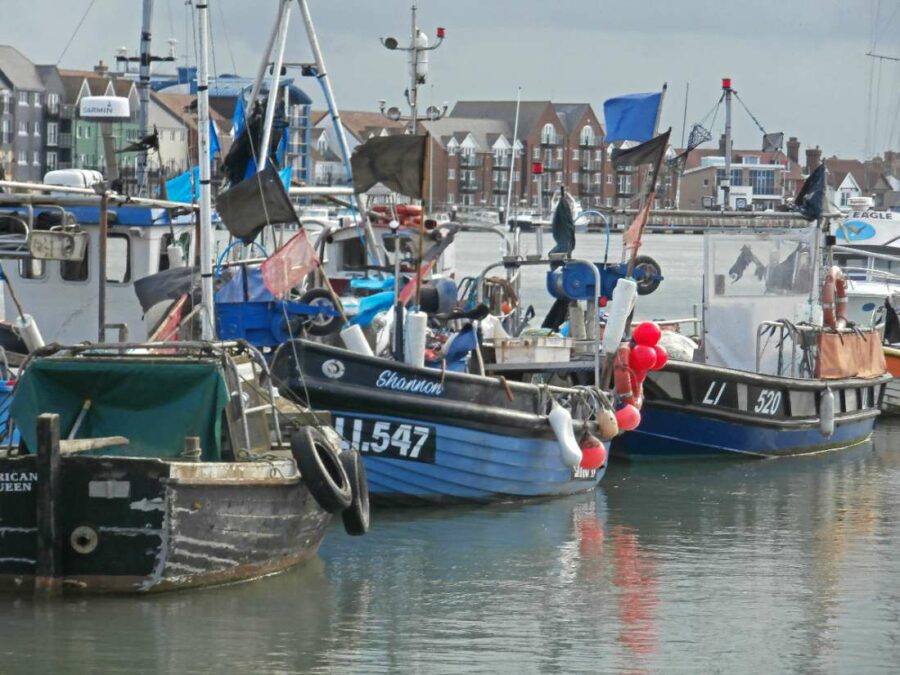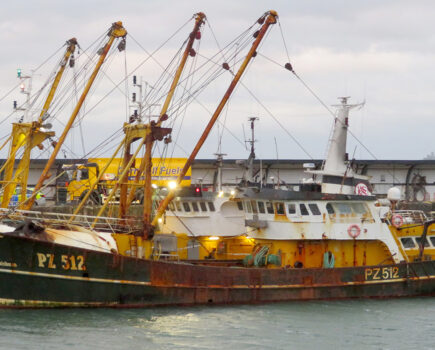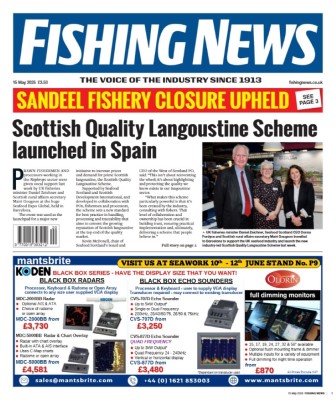There are many corrosive myths stealth-fully being targeted at our fisheries management, especially pertaining to the inshore bass gill net fishery, that are designed to have a retrograde effect on that fishery. Bass campaigners and now MP’s are busy propagating an agenda to claim that bass species exclusively for a recreational designation. Mrs Moon MP, Mr Mann MP, Mr Walker MP and others are obviously enhancing angling lobby groups’ agendas by making bias and erroneous statements in the House Of Commons, misleading the House and tarnishing the Fishing Industry. These important issues that we are raising must be now investigated rigorously and accordingly corrected.
Another point must also be considered: Regulation size for Bass (MLS) has continued to rise for decades, and inshore bass gill net fishermen have adjusted their nets accordingly to suit any increase in bass mls and at great expense. Assuming that the definition of a juvenile is below 42cm, we do not catch juvenile fish and we do not want to catch them. Anti-gillnet campaigners must acknowledge these facts and announce them. They should reflect on the fact that blind demonization of licensed fishermen who use nets, (for all sorts of fish species) will no longer be tolerated.
The reported mortality of catch and release bass by usual sport angling methods is anywhere between 3 and 5% depending on the study, but may be as high as 9%.
This mortality of bass is increased with a number of factors including small hook size and young fish age. It is well known that angling off a shoreline generally requires a smaller, lighter hook. It is also well known that juvenile bass favour shallow, inshore waters and are therefore unavoidably a target. The problem is there is a tendency for small bass to swallow the bait whole. Even if hook extraction is successful there is a significant possibility that the stress will kill the fish. Bass under mls 42cm caught with smaller hooks from shoreline, pier or awkward rocky terrain will result in a high degree of stress. A deep-set hook in the gullet of the fish will significantly increase the above quoted mortality figure. Treble hooks are also problematic.
There is a gross irony here. A selective bass gill net produces near zero juvenile bass compared to an average beach angler for example, who may well hook a considerable number of juvenile bass in an average session. This is even more significant considering the high number of inshore beach anglers represented as a portion of the 900, 000 recreational sea anglers.
This really does ‘cast’ a completely different light upon this whole debate, and it is one that the stakeholder- public should seriously weigh up against the usual dogma held against net fishermen.
We are sending a copy of this letter to our local IFCA (Southern IFCA) so they can see how we feel about these public misrepresentations. This is also poignant as the angling lobby group BASS is represented on SIFCA’s Committee. Since the BASS representative has been appointed by the MMO, and his organisation is openly calling on stakeholders and members of the public to make representations to the IFCA’s with the aim to shut down inshore gill netting (again, by disingenuously making allusions to the catching of juvenile bass in nets), it is even more incumbent on them (BASS), responsible authorities and MP’s to make clear, unambiguous statements to the stakeholder public concerning the selectivity and conservation attributes of gillnets when used in a balanced, responsible way.
In conclusion, and in addition to our request to Mrs Moon, MP, we once again appeal to fishing authorities to publish the facts about the selectivity of gill nets and address our grievances. More importantly, we demand to know precisely where these misrepresented anomalies came from. It is our sincere hope that all negative campaigners against gillnet fishermen will gain a more balanced, less dogmatic view and stop eluding these facts.
Yours sincerely,
The Warsash Inshore Fishermen’s Group








